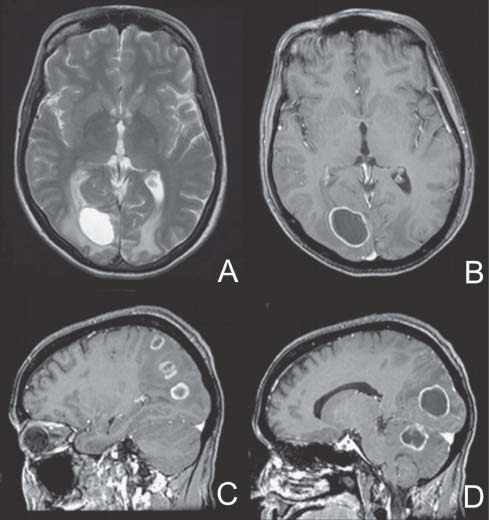Case 24 Multiple Ring-enhancing Cerebral Lesions Kevin Petrecca and Rolando Del Maestro Fig. 24.1 (A) T2-weighted axial magnetic resonance image (MRI), (B) T1-weighted axial MRI with contrast, and (C,D) T1-weighted sagittal MRI showing intraparenchymal lesions. A stereotactic biopsy for diagnosis was performed and was nondiagnostic and the lesions are not decreasing in size on broad spectrum antibiotics. A right parietal craniotomy was performed and one of the lesions was resected. Pathology was consistent with an adenocarcinoma. A computed tomography (CT) scan of the chest and abdomen revealed a small mass adjacent to the right main stem bronchus.

 Clinical Presentation
Clinical Presentation
 Questions
Questions
 Answers
Answers
24 Multiple Ring-enhancing Cerebral Lesions
Case 24 Multiple Ring-enhancing Cerebral Lesions Fig. 24.1 (A) T2-weighted axial magnetic resonance image (MRI), (B) T1-weighted axial MRI with contrast, and (C,D) T1-weighted sagittal MRI showing intraparenchymal lesions.

 Clinical Presentation
Clinical Presentation
 Questions
Questions
 Answers
Answers
< div class='tao-gold-member'>
Only gold members can continue reading. Log In or Register to continue
Stay updated, free articles. Join our Telegram channel

Full access? Get Clinical Tree


